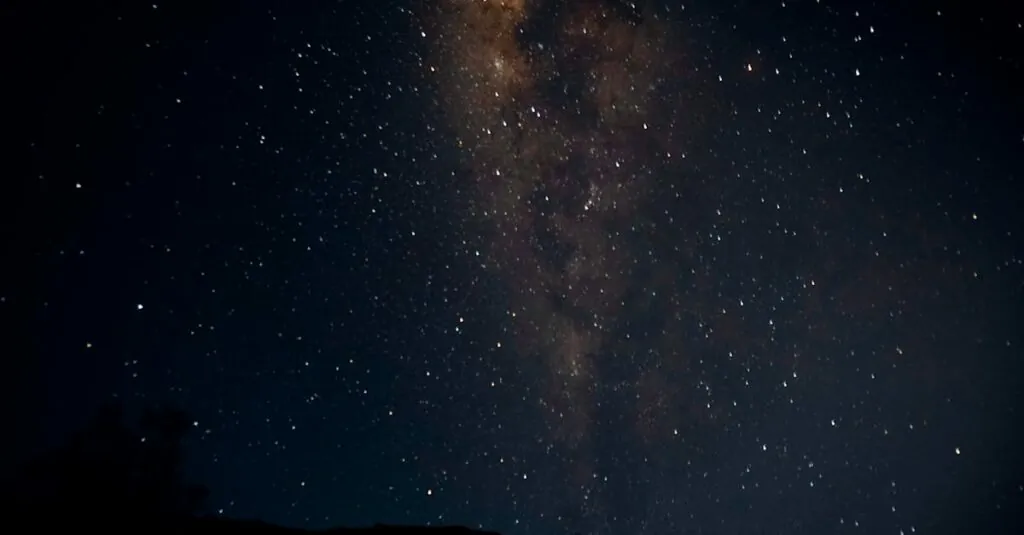Table of Contents
ToggleWhen it comes to smartphone photography, the iPhone 13 is like that overachieving friend who always shows up with the best stories and the sharpest selfies. But just how many megapixels does this tech marvel pack? Spoiler alert: it’s more than enough to make your vacation photos look like they belong in a gallery.
Overview of the iPhone 13 Camera
The iPhone 13 boasts a robust camera system, designed for both casual and serious photography enthusiasts. Its advanced features enhance the overall user experience, making it more appealing for capturing stunning images.
Camera Specifications
The dual-camera setup includes a 12 MP Wide camera and a 12 MP Ultra Wide camera. Advanced night mode and sensor-shift optical image stabilization improve low-light performance. Additionally, the Smart HDR 4 feature optimizes photos for better highlights and shadows. Users can switch between lenses seamlessly, providing versatility in photography.
Megapixel Count
The iPhone 13 features a 12 MP megapixel count for each camera, ensuring high-resolution images. This count allows users to capture intricate details in every shot. With its computational photography capabilities, the iPhone 13 enhances image quality beyond standard expectations. Each photo appears crisp and vibrant, meeting the demands of modern users interested in memorable photography.
Understanding Megapixels
Megapixels play a crucial role in smartphone photography. They indicate the resolution of images captured by the camera.
What Are Megapixels?
Megapixels represent one million pixels in an image. Cameras calculate megapixels by multiplying the width and height of the image in pixels and dividing by one million. An image with 12 MP contains around 12 million individual pixels, allowing for detailed and clear photos. Smartphones like the iPhone 13 utilize this measurement to highlight their camera capabilities. Higher megapixel counts generally yield sharper images, especially when enlarging or cropping photos.
Impact of Megapixels on Image Quality
While higher megapixels increase detail, other factors also influence image quality. Sensor size, lens quality, and image processing algorithms significantly affect overall performance. A 12 MP image from the iPhone 13 can showcase extraordinary clarity due to its advanced features, such as Smart HDR and night mode. Users enjoy vibrant colors and accurate details, even in low-light situations. Additionally, effective compression techniques help maintain image quality without excessively increasing file size.
Comparison with Other Models
The iPhone 13 stands out in comparison to its predecessors and competitors due to its advanced camera features.
iPhone 13 vs. iPhone 12
The iPhone 12 features a dual-camera system with 12 MP lenses similar to the iPhone 13. Differences arise in the image processing capabilities, where the iPhone 13 incorporates improved computational photography. This enhancement results in more vibrant colors and sharp details. Night mode performs exceptionally well on both models, yet the iPhone 13 boasts sensor-shift optical image stabilization, further reducing blurriness in low light. Users find noticeable improvements in HDR performance and overall image quality with the iPhone 13.
iPhone 13 vs. Competitors
When compared to the Samsung Galaxy S21, the iPhone 13 maintains a competitive edge. Both smartphones feature dual-camera systems, though the Galaxy S21 packs a 12 MP wide lens and a 64 MP telephoto lens. Image quality differs as the iPhone 13 excels in color accuracy and low-light photography through its Smart HDR and night mode. Competitors like the Google Pixel 6 also utilize image processing innovations, but the iPhone 13’s robust system produces more reliable results in a variety of shooting conditions. Thus, whether it’s capturing landscapes or portraits, the iPhone 13 holds its ground in today’s smartphone market.
Real-World Photography Experience
The iPhone 13 excels in real-world photography, making it an ideal choice for enthusiasts. Each camera’s 12 MP resolution captures stunning detail in various environments.
Low Light Performance
Low light performance stands out thanks to advanced night mode features. Users notice improved brightness and clarity in dark settings. Sensor-shift optical image stabilization enhances image stability even during nighttime shots. Smart HDR 4 optimizes highlights and shadows, resulting in balanced images. Significant improvements over previous models make low-light photography an enjoyable experience. The combination of these features ensures users can capture vibrant scenes with minimal noise.
Portrait Mode Capabilities
Portrait mode capabilities deliver exceptional results, showcasing the iPhone 13’s versatility. This mode blurs the background beautifully, creating depth for subject focus. It allows for adjustments in lighting and effects, enabling personalization. Photographers appreciate the accurate skin tones and sharp details it captures. Enhanced bokeh effects enrich the aesthetic of portraits, highlighting subjects effectively. Multitude of lighting options creates diverse photographic opportunities, making it great for social media sharing.
The iPhone 13 proves itself as a formidable contender in smartphone photography. With its dual 12 MP camera system and advanced features like night mode and Smart HDR 4, it captures stunning images that are both vibrant and detailed. Users can expect exceptional performance in various lighting conditions, making it a reliable choice for anyone looking to elevate their photography game.
Its ability to produce gallery-worthy photos ensures that memories are preserved beautifully, whether at a family gathering or on a scenic vacation. For photography enthusiasts seeking quality and versatility, the iPhone 13 stands out as a top-tier option in the competitive smartphone market.







